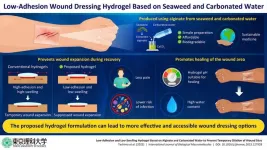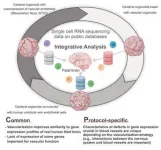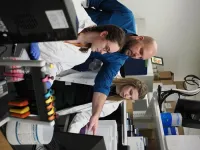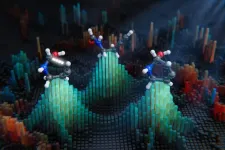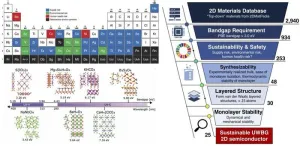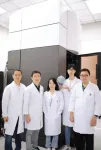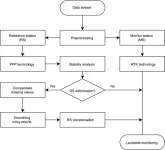Acting as the main interface between the internal and the external world, the skin is the largest and most important organ of the human body. It is frequently exposed to many types of physical injuries or wounds, including cuts, scrapes, scratches, infections, and ulcers. Unfortunately, as one ages, the skin becomes more frail and less capable of healing itself without help. With many countries experiencing a rapid rise in the aging population, the demand for treating such skin wounds has created a greater need for accessible and effective wound care products.
Over the past few decades, hydrogels have received a lot of attention for treating skin wounds. When applied over a lesion, these special gels can promote healing by absorbing discharged fluids (exudates) and keeping the wound protected, well-hydrated, and oxygenated.
However, most developed hydrogels are given adhesive properties to skin tissue to follow skin movement. Since these hydrogels are sticky and adhere to the skin and wound site, they stretch and expand the wound itself once they swell up after absorbing exudates. This not only causes pain to the user but also puts them at a higher risk of bacterial infection due to the wound area expansion. Therefore, in order to create hydrogels that can effectively treat wounds without interfering with the wound healing process, it is necessary to experiment with the preparation of hydrogels based on new ideas while utilizing existing material properties.
Against this backdrop, a team of researchers from Tokyo University of Science (TUS), Japan, have now proposed an innovative and highly-value added medical material for treating skin wounds. As reported in their recent study published in the International Journal of Biological Macromolecules, they developed a novel, low-cost hydrogel using a component found in seaweed, achieving physical properties completely different from those of conventional hydrogels. The study, which was made available online on 8 November 2023, and will be published in Volume 254, Part 3 of the journal in January 2024, was led by Mr. Ryota Teshima, a Master’s student at TUS. Assistant Professor Shigehito Osawa, Ms. Miki Yoshikawa, Associate Professor Yayoi Kawano, Professor Hidenori Otsuka, and Professor Takehisa Hanawa, all from different faculties and departments at TUS, were also a part of this study.
The method of preparation of the proposed hydrogel is quite straightforward. It was made using alginate, calcium carbonate, and carbonated water. Alginate is a biocompatible substance that can be extracted from beach-cast seaweed. Most importantly, it does not adhere strongly to cells or skin tissues. Thanks to the special structure formed by alginate and calcium ions, in addition to the protective effect of the CO2 in carbonated water against acidification, the resulting hydrogel not only exhibited ideal pH and moisture conditions for wound recovery but also demonstrated significantly lower adhesion and swelling, compared to other commercial hydrogel wound dressings.
The researchers tested the effectiveness of their new hydrogel using cell cultures and a mouse model, both of which yielded excellent results. “Through animal experiments, we demonstrated that our hydrogel has a high therapeutic effect and at the same time can suppress the temporary expansion of the wound area caused by conventional clinical preparations,” remarks Mr. Teshima. “This proves our initial hypothesis that gels with low skin adhesion and low-swelling properties are excellent as wound dressing materials, which is the complete opposite of conventional wisdom.”
Worth noting, alginate can be extracted from beach-stranded seaweed, a renewable resource that is often regarded as a coastal waste material. Since the proposed hydrogel is not only inexpensive but also biodegradable, this development marks an important step towards future progress on sustainable medicine. “Medical materials still lack a sustainability-oriented perspective, and we believe this research will serve as a benchmark for the design of future medical materials and lead to sustainable and low-cost wound care,” says Mr. Teshima. “Moreover, our findings can help clarify issues with hydrogel formulations currently in clinical use and provide new design guidelines for next-generation wound treatment gels.”
We surely hope that the insights revealed by this study will pave the way for novel solutions aimed at enhancing medical care for aging societies!
***
Reference
DOI: https://doi.org/10.1016/j.ijbiomac.2023.127928
About The Tokyo University of Science
Tokyo University of Science (TUS) is a well-known and respected university, and the largest science-specialized private research university in Japan, with four campuses in central Tokyo and its suburbs and in Hokkaido. Established in 1881, the university has continually contributed to Japan's development in science through inculcating the love for science in researchers, technicians, and educators.
With a mission of “Creating science and technology for the harmonious development of nature, human beings, and society", TUS has undertaken a wide range of research from basic to applied science. TUS has embraced a multidisciplinary approach to research and undertaken intensive study in some of today's most vital fields. TUS is a meritocracy where the best in science is recognized and nurtured. It is the only private university in Japan that has produced a Nobel Prize winner and the only private university in Asia to produce Nobel Prize winners within the natural sciences field.
Website: https://www.tus.ac.jp/en/mediarelations/
About Ryota Teshima from Tokyo University of Science
Mr. Ryota Teshima is a Master's student at the Tokyo University of Science. As a young researcher, he has already published five research papers in science education and the development of hydrogels for biomaterials. Mr. Teshima's academic journey has been outstanding, and he has received several awards. He has also been selected as a fourth-generation member of the Masason Foundation created by SoftBank Group Representative Masayoshi Son.
END
